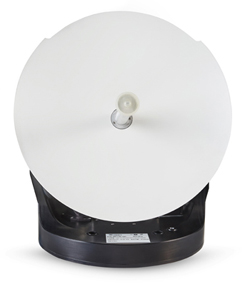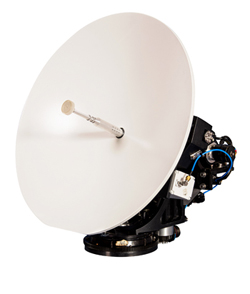INDIAN ARMED FORCES CHIEFS ON
OUR RELENTLESS AND FOCUSED PUBLISHING EFFORTS

SP Guide Publications puts forth a well compiled articulation of issues, pursuits and accomplishments of the Indian Army, over the years

I am confident that SP Guide Publications would continue to inform, inspire and influence.

My compliments to SP Guide Publications for informative and credible reportage on contemporary aerospace issues over the past six decades.
- Prime Minister witnesses 'Bharat Shakti' – a Tri-Services Firing and Manoeuvre Exercise in Pokhran, Rajasthan
- Interim Defence Budget 2024-25 — An Analysis
- Union Defence budget 2024
- Prime Minister Modi Commemorates Indian Navy Day in a Grand Ceremony
- Prime Minister Modi Flies in the LCA Tejas
- New Chapter in India-Italy Defence Ties
- Airpower beyond Boundaries
Orbit to integrate family of airborne terminals across Viasat's expanded Ka-band network
The integrated terminals will operate over Viasat's Ka-band networks, as well as the current and future Global Xpress (GX) satellites


Orbit Communications Systems Inc, a leading global provider of maritime and airborne SATCOM terminals, tracking ground station solutions, and mission-critical airborne audio management systems, announced today it has signed a cooperation agreement with Viasat Inc, under which Orbit’s airborne terminals will integrate with the extensive Viasat Ka-band network, which includes the Global Xpress (GX) network now operated by Viasat following its acquisition of Inmarsat on May 30th.
The new cooperation agreement includes the Orbit MPT-30 (12”) and MPT-46 (18”) Ka-band product lines.
The newly integrated system will create a multi-constellation-capable set of terminals, which will operate over the Viasat Ka-band networks and the Global Xpress network, as well as other MEO constellation networks. This integrated solution will provide military and commercial end-users with ubiquitous access to the Ka-band capacity, global coverage, and increase dresiliency from both the Viasat and Global Xpress networks, delivering many of the advantages the newly combined company plans to bring to customers with broader network integration.
Dany Eshchar, CEO of Orbit Communications Systems, said, “Orbit is proud to cooperate with Viasat in order to provide comprehensive SATCOM solutions. The integrated solutions will provide customers with a market-leading, future-proof approach, as well as the dedication of the Viasat and Orbit teams to support these customers in the long-term. The airborne systems, developed by Orbit, are already installed and proven worldwide. Viasat and Orbit are taking a multi-phased approach to the integration of their respective technologies, to serve both the short-term and long-term needs of high requirement government users, worldwide. We expect this cooperation to serve additional customers of the two companies.”
“We are very excited about our collaboration with Orbit Communications Systems and what it can bring to military customers. We’ve made significant strides in jointly developing a universal Ka-band terminal system that can support multiple constellations and orbits,” said Victor Farah, Vice President of Viasat Government Broadband Systems. “This innovative system will also make effective use of Viasat's recent acquisition of Inmarsat, tapping into added Ka-band capacity and flexibility. The new terminal will adhere to the Open AMIP standards and allows customers to access the entire Ka-band spectrum, including Mil-Ka. We’re proud to be working with Orbit to offer government customers a truly global and flexible Ka-band experience that can be an enabler for their mission.”
The Multi-Purpose Terminals (MPT) terminals fulfil the ‘everywhere, all-the-time’ coverage requirements of both military and commercial airborne users. They also allow government users to roam between commercial Ka-band and Mil-Ka services. These low size, low-weight and low-power (SWaP) user terminals can deliver up to 126 Mbps forward link and up to 29 Mbps return link on Mil-Ka HCX service while maintaining uninterrupted connectivity during all flight phases.
The terminals can be installed on a range of business jets, missionaircraft, rotary wing and uncrewed aerial vehicles (UAVs). They comply with industry standards, including MIL-STD-188-164C, RTCA DO-160G, Federal Communications Commission (FCC) and European Telecommunications Standards Institute (ETSI). They are compatible with military satellite systems, making them an ideal choice for government airborne Intelligence, Reconnaissance, and Surveillance (ISR) applications.





